Limestone Kiln at Hobbs
Lime was quarried and processed at Hobbs
Lime Production from a Lime Kiln



Conservation Story
In September 2024, after a visit to Gunns Mill conservation project, the committee were inspired to make a commitment to conserve the limekiln that is an integral part of the industrial heritage of Hobbs Nature Reserve. With the help of Kate Biggs the Conservation Officer for Gloucester City Council and Steve Mills, the chair of the Gloucestershire Society for Industrial Archaeology we made an application to Enovert Community Trust for a grant to pay towards the conservation cost. We received the welcome news at the end of January 2025 that our application for funding had been successful. During the application process, we had a great deal of support from the Trust Manager, Angela Haymonds and would like to put our record, thanks to her and the trustees for the confidence they have shown in our project. We are also grateful to Innovation Visual Limited who provided additional finance to support the project through their commitment to environmental projects.
Hobbs Conservator
We chose Jake Etherton as the lead conservation professional. From our initial conversation with Jake, it was obvious that he was not only a brilliant craftsman, but he had a real sense of the history of the structure and vision of the result of his work.
Hobbs Lime Kiln Work Schedule
The work started in March 2025 with the initial clearing of debris from around the structure to establish the full extent of the conservation work that would be required. Volunteers from the committee worked hard as “labourers” under the supervision of Jake, clearing soil and stones. The soil was moved away, but the stones were cleaned and put on one side to be used in the reconstruction.
Finding The Hidden Chamber
On the 18th April, we made a surprising discovery that was to change the whole nature of the structure. On the right hand side of the site, there had been a mystery hole in the earth bank and we had always assumed that this was possibly an excavation by a fox or badger. However, as we moved the soil away to expose the wall ready for it to be stabilised, we found that there was a void that extended back several metres into the earth bank. Further excavations revealed a substantial stone arch. Over the next few days, a chamber extending back 3.6 m, 2 m wide and 2.1 m high was revealed. The chamber was half filled with soil and stones more than 1 m deep.
This discovery has solved many of the questions that we had about the structure of the kiln and the way that it processed the limestone. When the chamber was cleared of all the stone and soil, a sloping floor was revealed coming out from the chamber and the opening where the process lime was taken from the kiln could be seen..
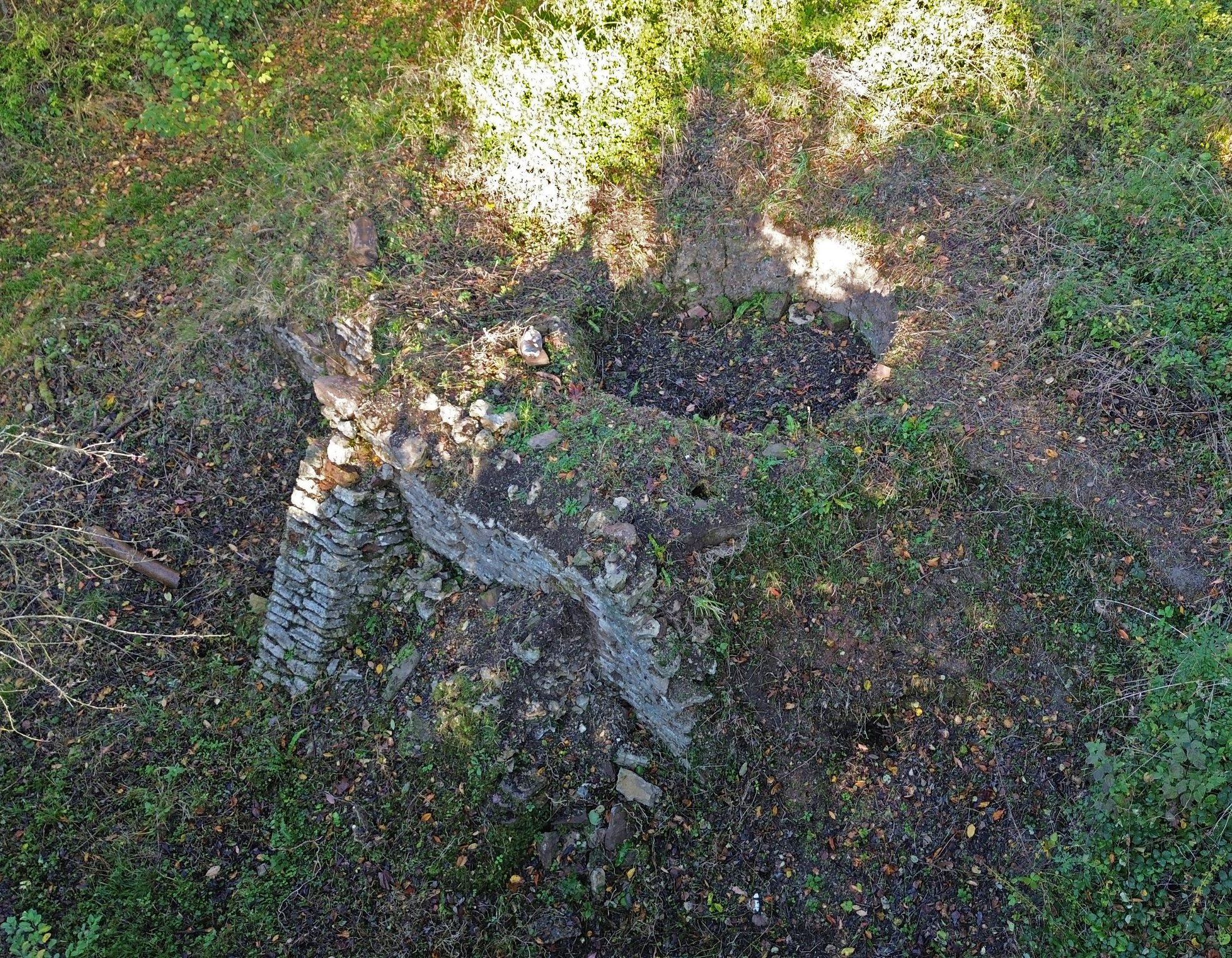
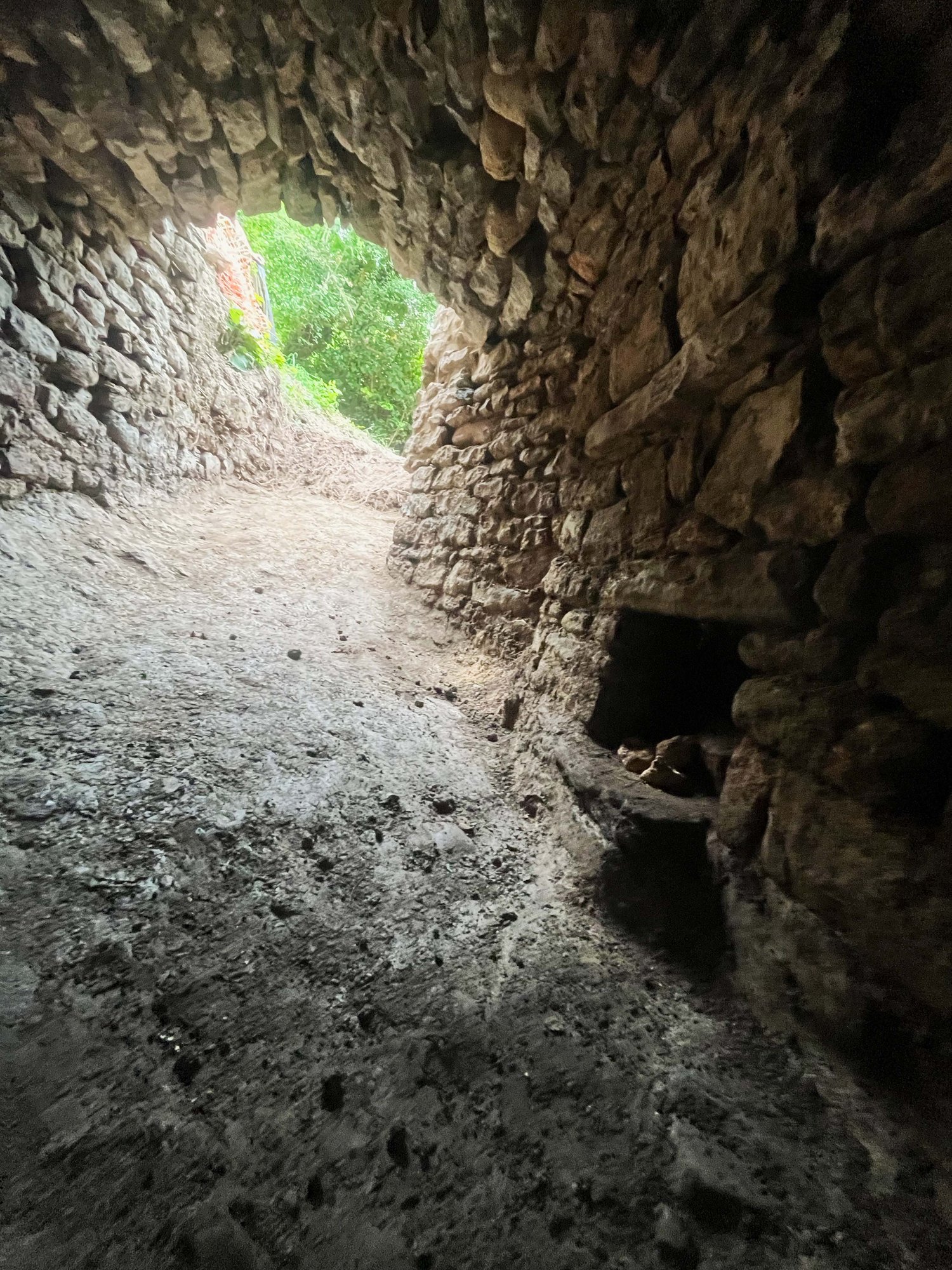
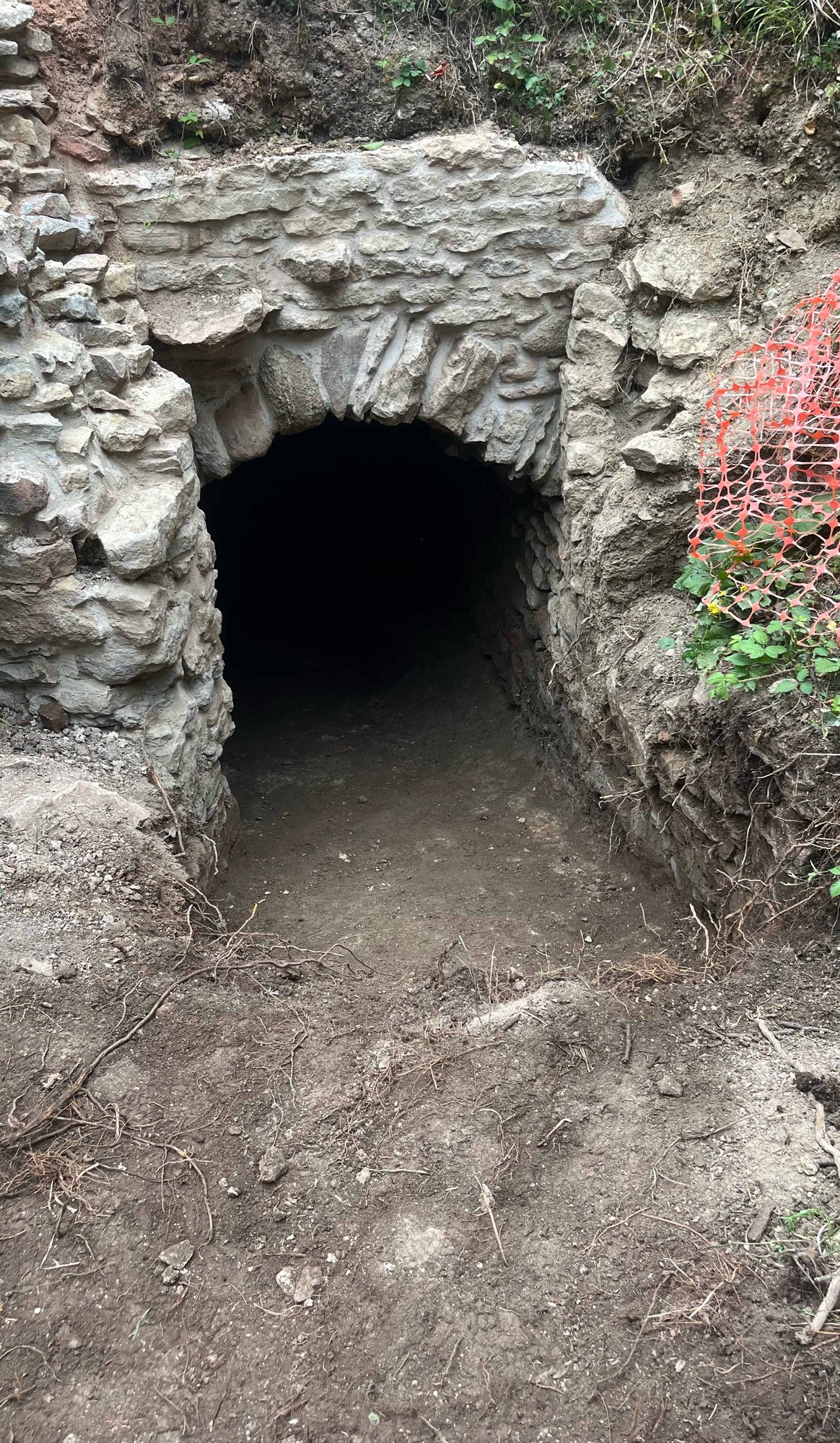
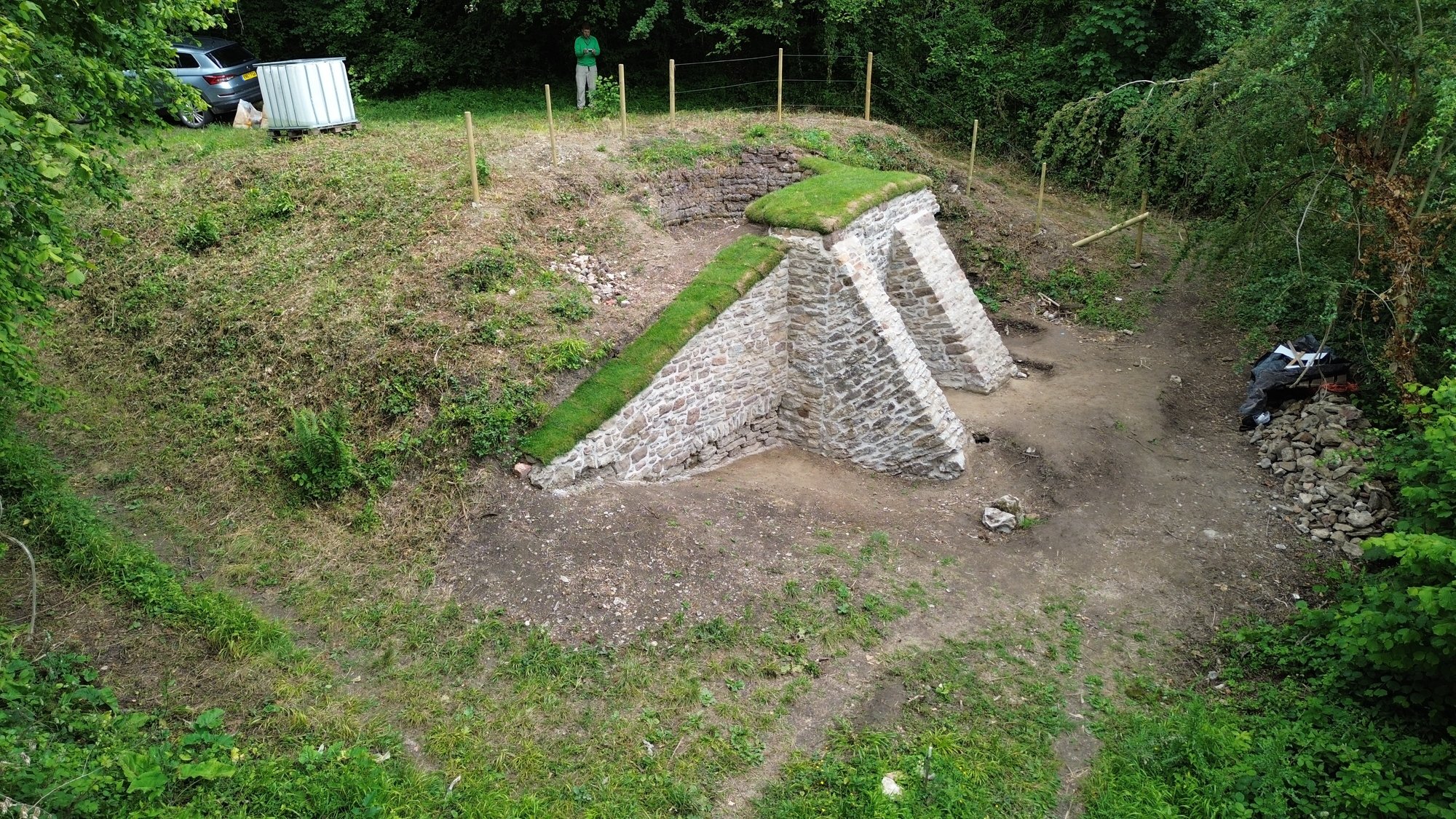
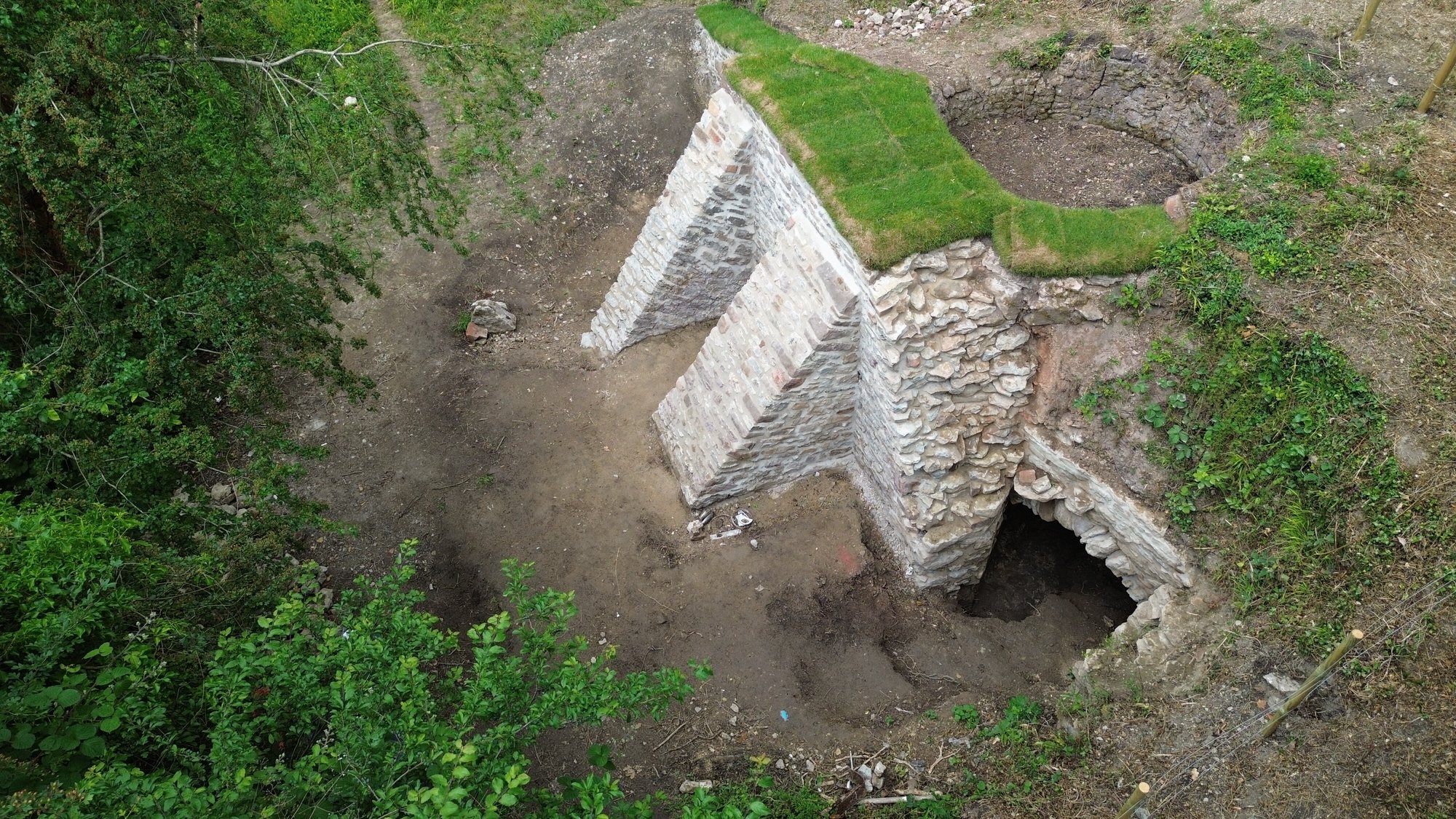
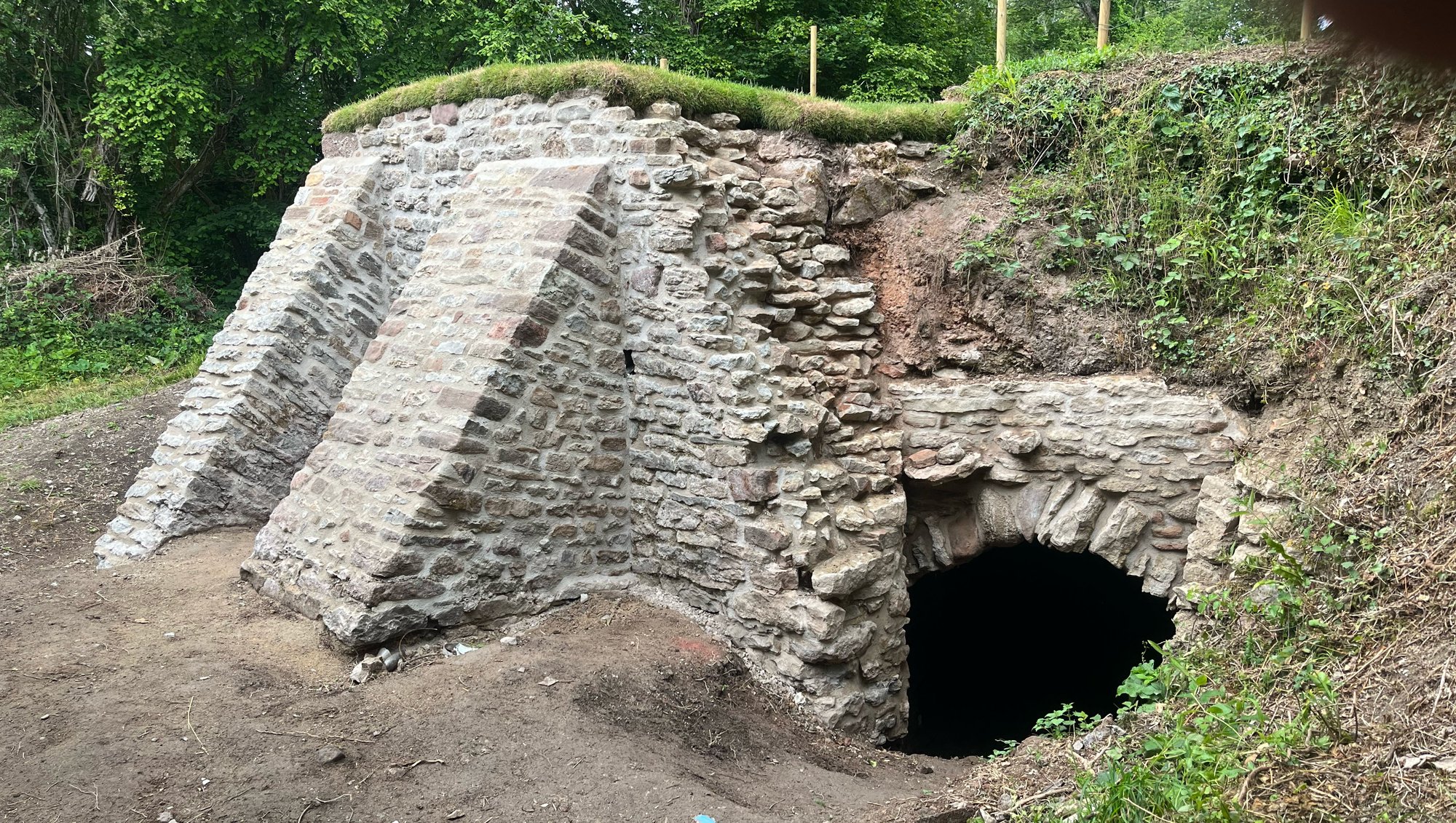
The Construction of Lime Kilns in the Forest of Dean in the 1800s
Introduction
Lime kilns played a pivotal role in the industrial development of the Forest of Dean during the 1800s. The lime produced was vital for agricultural enhancement, construction, and various industrial applications. The region’s abundance of natural limestone and proximity to transport routes made it an ideal location for lime production.
Construction Methods
The construction of lime kilns in the 19th century typically involved using locally sourced stone due to its durability and heat retention properties. Predominantly, vertical shaft kilns were built, characterised by:
• Thick Stone Walls: Designed to withstand high temperatures and retain heat efficiently.
• Chimney or Shaft: A vertical structure where alternating layers of limestone and fuel—commonly coal or wood—were placed.
• Draw Holes or Arches: Located at the kiln’s base, these facilitated air circulation and allowed for the extraction of quicklime after the burning process.
Kilns were strategically positioned near limestone quarries and transport routes to streamline the movement of raw materials and finished lime.
Types of Lime Kilns and Unique Architectural Features
In the Forest of Dean, several types of lime kilns were utilised, reflecting both traditional methods and local adaptations:
1. Intermittent (Batch) Kilns: These were the most common, where limestone and fuel were loaded in batches. After one cycle of burning and cooling, the kiln was reloaded. They often featured large, circular shafts with substantial stone buttressing to withstand the heat. The buttress features of the kiln at Hobbs would suggest that it was this type of kiln.
2. Continuous Draw Kilns: Designed for efficiency, these kilns allowed for a continuous operation where limestone and fuel were regularly added at the top, and lime was drawn from the bottom. They often included multiple draw arches for improved extraction and airflow control.
3. Beehive Kilns: Notable for their dome-shaped structure, resembling a beehive, these kilns were more prevalent in specific areas. Their arched roofs and compact design provided excellent heat retention.
4. Double Kilns: Some sites featured paired kilns sharing common walls, which conserved construction materials and facilitated simultaneous operations. These often had symmetrical designs with twin shafts and shared flue systems.
Unique architectural features across these kilns included robust retaining walls built into hillsides for stability, intricate stonework around the draw holes, and corbelled arches designed to manage the stresses of repeated heating and cooling cycles.
Operational Process
The process of producing lime, known as calcination, involved several critical steps:
1. Loading: Layers of limestone and fuel were carefully stacked within the kiln.
2. Burning: The kiln was fired, and temperatures were meticulously controlled to ensure efficient calcination, converting calcium carbonate (limestone) into calcium oxide (quicklime).
3. Airflow Management: Openings at the kiln’s base helped regulate airflow, essential for maintaining high temperatures.
4. Extraction: Once the process was complete, quicklime was drawn out through the bottom openings. One of these openings can be seen in the underground chamber at Hobbs.
Managing the kiln was labour-intensive and hazardous, with workers exposed to extreme heat and potentially toxic gases. The soot deposits can still be seen on the wall of the underground chamber at Hobbs.
What Was It Like To Work In The Kiln In 1800s?
At Hobbs Nature Reserve the lime kiln was located near the limestone quarry to the north of the kiln. It was built into the typical rugged, wooded landscape of the Forest of Dean. The site would be bustling with activity, surrounded by heaps of raw limestone, stacks of fuel (commonly coal or wood), and clouds of dust. The kiln was a towering stone structures with thick walls and roaring fires within, emitted intense heat, even from a distance.
Daily Routine and Labour
A typical day began early, often before dawn. Workers loaded the kiln with alternating layers of limestone and fuel, carefully arranged to ensure efficient burning. This task required considerable strength and endurance, as the materials were heavy and the loading process continuous, especially in the case of continuous draw kilns.
Once ignited, the kiln burned at extremely high temperatures, and maintaining these temperatures was crucial. Workers had to manage airflow meticulously, adjusting vents and draw holes to regulate the burn. This involved close proximity to the kiln’s searing heat, making the work both physically exhausting and dangerous.
Hazards and Hardships
The job was fraught with risks. Exposure to extreme heat could cause burns and heat exhaustion. The lime dust, when inhaled, posed serious respiratory risks, and the quicklime itself was caustic, burning skin and eyes on contact. Accidents from collapsing stone, slips on uneven ground, and handling of hot materials were common.
Skills and Knowledge
Despite the harsh conditions, lime burning required considerable skill. Workers needed to understand the properties of limestone, the behaviour of fire, and the intricacies of kiln operation. Experience taught them how to identify the subtle signs that indicated whether the limestone was fully calcined or if adjustments were needed to the fire or airflow.
Community and Life Around the Kilns
The lime kiln workers often formed tight-knit communities. They lived in modest cottages nearby, with their families also enduring the environmental impacts of the kilns—constant smoke, dust, and the noise of industrial activity. Despite the hardships, these communities developed a strong sense of camaraderie, bound by shared labour and the rugged beauty of the Forest of Dean.
In reflection, working on a lime kiln in the 1800s was emblematic of the Industrial Revolution’s demands—intense human labour intertwined with the forces of nature and industry, shaping both the landscape and the lives of those who toiled within it.
Contact Us
If you have any questions or comments please contact us through our email: contact@hobbsnaturereserve.org.uk
